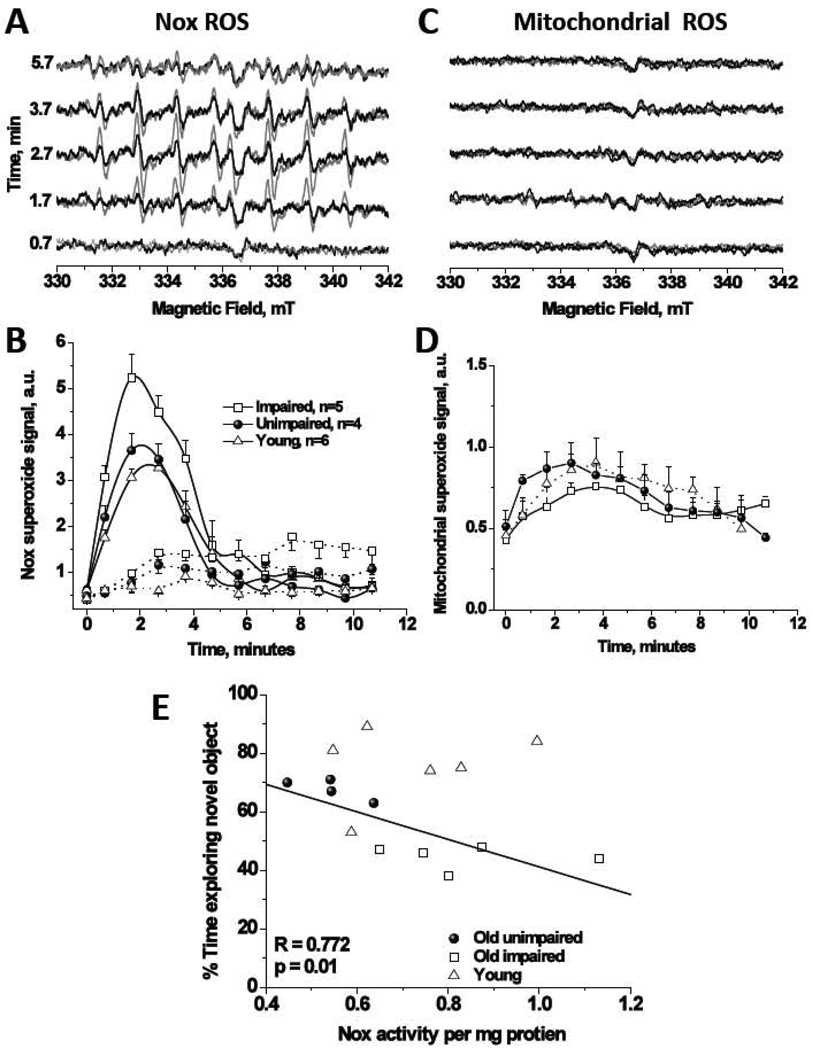Figure 2.
EPR spin trapping spectroscopy elucidates that Nox is a major source of superoxide in synaptosomes with minor contribution from synaptosomal mitochondria in young and old mice brains. (A) Representative EPR spectra recorded over ~ 6 minutes from mixing of 5 mM NADPH with 0.2–0.5 mg synaptosomal protein isolated from brain of age-impaired (gray lines) or age-unimpaired (black lines) mice at 37°C with 70 mM DEPMPO. In the incubations, 10 mM DETC was included to inhibit the SOD enzyme resulting in enhanced, and hence, quantifiable EPR signals. (B) Observed superoxide bursts upon adding NADPH in all groups (solid lines) and the effect of inclusion of the Nox2 inhibitor apocynin (300 µM final concentration, dashed lines), n=6, 5, and 4 for young, age-impaired, and age-unimpaired groups, respectively. See methods for details. Data are mean ± SEM. (C) Representative EPR spectra of superoxide production from metabolically active synaptosomal mitochondria in the same preparations under the same conditions except that Nox substrate is replaced by mitochondria ones. State 3 respiration was initiated by the addition of 10 mM malate + 10 mM pyruvate. Addition of ADP was not necessary to initiate state 3 oxygen consumption indicating that synaptosomes contain a pool of the ATPase substrate. The mitochondrial superoxide signals were quantified in panel (D). (E) Novel object recognition performance correlates with the yield Nox-produced superoxide at the synapses in old but not in young brains. Area under superoxide bursts’ EPR signals over the first 6 minutes from activity initiations were collected and normalized by the total synaptosomal protein contents for each group. Linear regression analysis is only applied on the old groups and the solid line represents the least-square best fit for the 9 data points obtained for the two old groups. Statistically significant linear negative correlation was obtained (R = −0.772, SD = 8.64, p = 0.01) with the general trend of higher superoxide yields in old brains from animals with lower recognition performance. Young animals however performed consistently better in the behavioral test independently of the superoxide levels in their synaptosomes.

